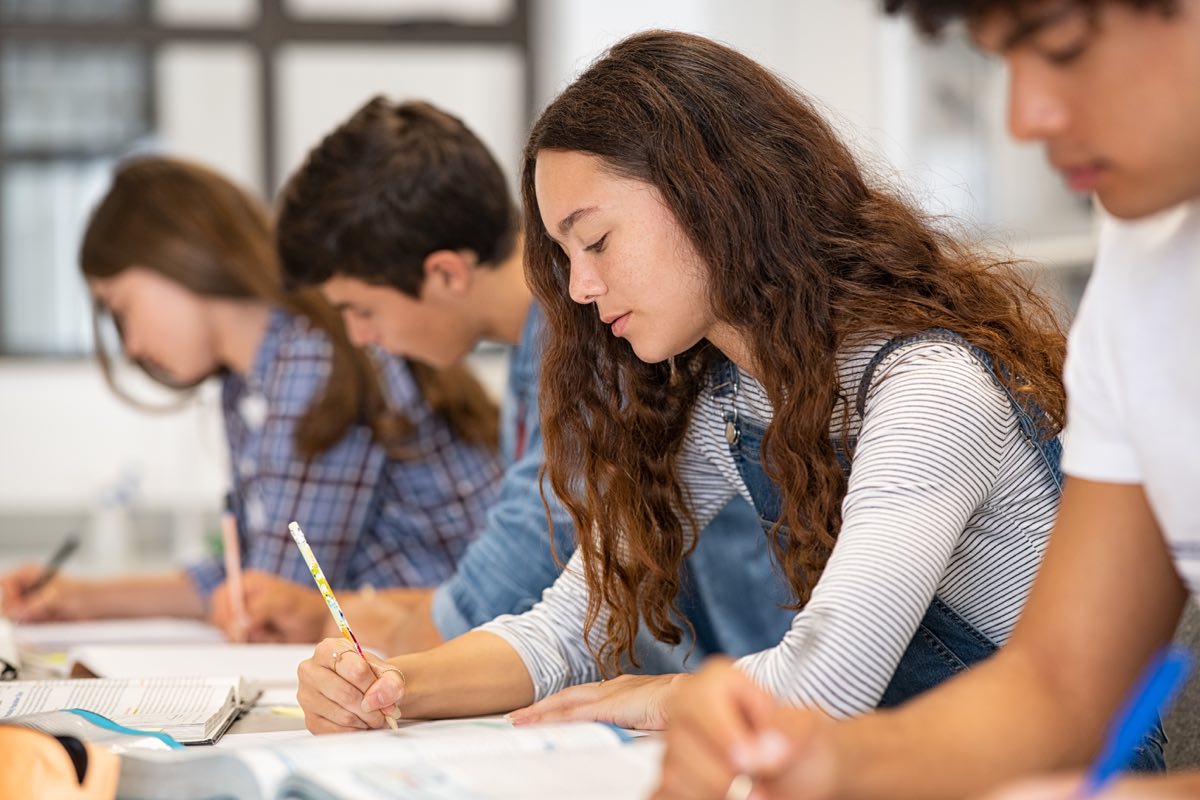
Teaching news literacy in polarizing times
By Hannah Covington and Suzannah Gonzales
While discussing the Derek Chauvin murder trial in the death of George Floyd, a student alerts the class about the fatal shooting of Daunte Wright. On a separate day, another student asks why there was little coverage about a certain aspect of the deadly Atlanta-area shootings. The morning after a grand jury’s September decision in the Breonna Taylor case, a student wants to talk about it. Others bring up national politics.
In a school year of historic upheaval, partisanship and vitriol can easily seep into the classroom when controversial current events come up. Faced with charged students — as well as parents and guardians — some educators may question whether it is worth broaching these difficult topics at all.
But teaching current events through the lens of news literacy can help students engage meaningfully with the headlines they encounter without exacerbating strong emotions or divisions — and also empower them to identify credible news and information. Below are six tips and strategies for teaching news literacy in polarizing times.
1. Approach news reports like other texts
News coverage — like poetry, short stories and other class texts — offers rich opportunities for discussion and analysis. Remind students to approach news stories as they would other texts in class: closely and critically, evaluating each piece of information and any supporting evidence. If a student makes a polarized claim during class or in an assignment, challenge them to support the claim with fact-based evidence.
2. Focus on journalism standards
Center discussions of news articles on the standards of quality journalism, which can help build common ground. Even those who disagree on controversial issues can agree that credible news coverage should incorporate standards, such as fairness, accuracy and transparency.
For instance, asking students to read a news article with credible sources in mind — “Where is information coming from? How many different sources are there? Are any relevant voices or perspectives missing?” — can sharpen the focus of a class conversation and help move students beyond kneejerk reactions to a story topic.
3. Emphasize specifics
Rather than labeling an entire news report as “biased,” students should concentrate on particulars, such as a specific headline, caption or word choice. Pose questions like, “Is this specific element of the story fair and accurate?” or, “If you had to write a headline for this story, what would it be?”
Students, for example, could compare wording in breaking news alerts about the decision in the Breonna Taylor case. Or, they could focus on how news organizations label coverage of major developing stories, such as the deadly Atlanta-area spa shootings.
Focusing the conversation on specific parts of news coverage may help avoid fights over the topic itself.
4. Reflect on personal biases
Students benefit from becoming aware of their own biases as news consumers. Personal backgrounds and life experiences — as well as factors like race, ethnicity and gender — shape how we see the world. Ask students to consider how these biases might affect their perceptions of news reports and opinion pieces.
Following the Atlanta-area shootings, for example, students could read guidance published by the Asian American Journalists Association (AAJA) for newsrooms reporting on the shootings. Then, they could review news coverage and see how it compares to AAJA’s recommendations, taking note of language choices, context and sources.
5. Consult diverse news sources
Encourage students to explore various points of view by diversifying their media diet and turning to credible news sources that take journalism standards and ethics seriously. It’s easy to fall into partisan news bubbles, especially on social media. Challenge them to seek out multiple sources and perspectives — not just the ones they typically consult and agree with or that confirm their existing views. Being open to opposing viewpoints can help combat polarization.
Coverage comparisons, including headlines, work especially well: How did different news organizations cover this same topic? What similarities or differences do you notice?
One way to discuss the Chauvin case, for instance, could involve comparing coverage from local, national and international news organizations.
6. Remember learning outcomes
News literacy can give students practice using critical reading and observation skills. It aims to teach students how to think — not what to think — about news and other information (including sensitive issues). And with so many recent breaking and controversial news events that affect students and their communities, learning outcomes for news literacy apply well beyond the classroom.
* * *
Journalism documents today’s history. The unprecedented events and major news of the last school year have made teaching news literacy more crucial than ever. The current polarized climate may raise concerns over angry students, parents and guardians, but it also can present opportunities for productive dialogue. While recent events and controversies may feel overwhelming to teach, incorporating news literacy alongside a few simple strategies can help address important stories of the moment while making classroom conversations worthwhile.
Hannah Covington is the senior manager of education and content at the News Literacy Project. Suzannah Gonzales is a university adjunct instructor and former director of education and content at the News Literacy Project.